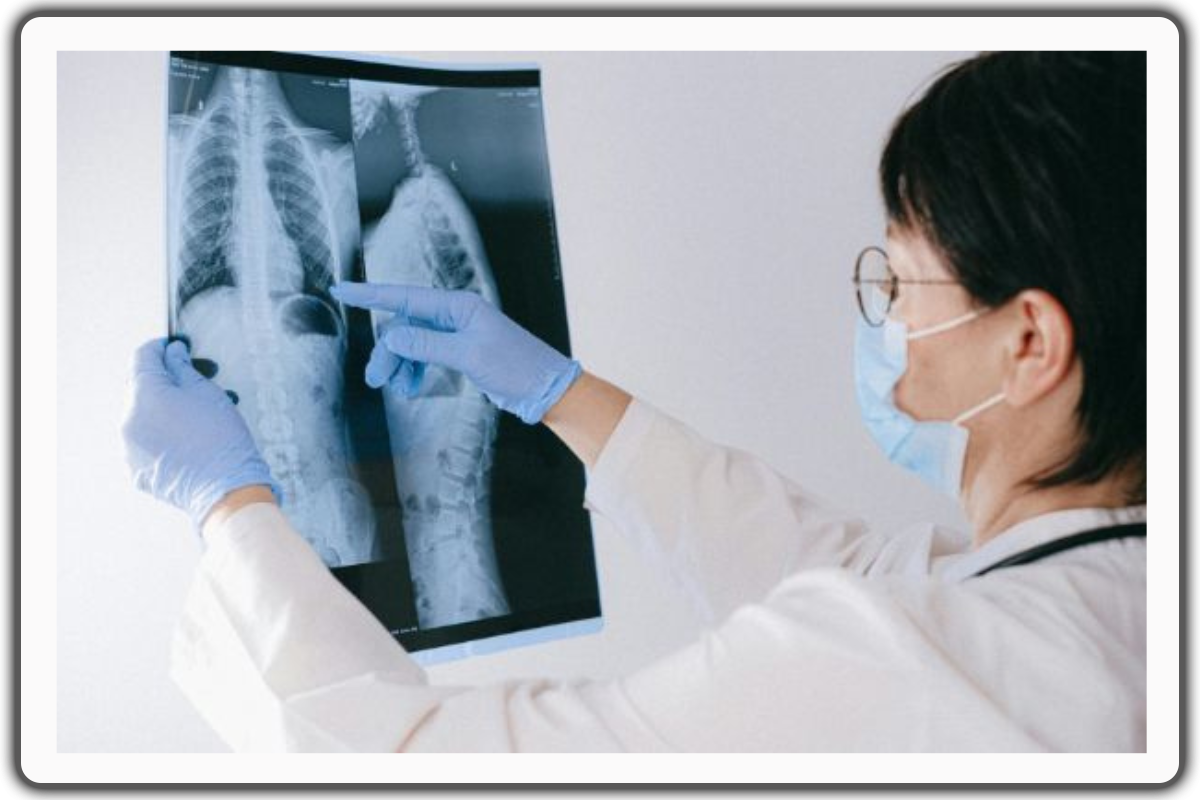
Thoracic Spondylosis: Causes, Symptoms, and Effective Treatment Options
Thoracic spondylosis is a medical term used to describe age-related degenerative changes in the thoracic spine, the middle portion of the spine, located between the neck and the lower back. Just like the lower back and neck, the thoracic area is prone to wear and tear over time, affecting the intervertebral discs, facet joints, ligaments, and nearby soft tissues. Although less common than cervical or lumbar spondylosis, thoracic spondylosis can still cause significant discomfort and limit daily living activities.
What Is Thoracic Spondylosis?
Thoracic spondylosis occurs when the shock-absorbing discs between the vertebrae begin to dry out and weaken. This process, called disc degeneration, reduces flexibility and places extra stress on the bones and joints. Over time, bone spurs may form, the spinal canal may narrow, and even a pinched nerve can develop, causing pain and neurological symptoms.
While herniated discs, disc herniations, or minor vertebral changes, and injured discs are possible, the condition most often results from gradual degeneration rather than a sudden injury. That said, a fall or car accident can accelerate damage in the affected area.
Thoracic Spondylosis Symptoms
The most common symptoms include:
- Persistent thoracic spine pain in the mid back or upper back
- Stiffness and reduced mobility, after sitting or remaining still for extended periods
- Muscle weakness or numbness due to pressure on the spinal cord or spinal nerves
- Difficulty walking or other symptoms of nerve compression
- A sensation of instability in the joints or discomfort while lifting heavy objects
In severe cases, neurological symptoms such as tingling or numbness may appear; in rare cases, spinal cord compression may lead to bowel or bladder changes, requiring urgent attention from a spine specialist.
Risk Factors and Causes
Several factors increase the likelihood of developing thoracic spondylosis:
- Poor posture during work or daily tasks
- Heavy lifting or repetitive strain
- Family history of spinal degeneration
- Previous fall or car accident affecting the spine
- Osteoarthritis leading to facet joint degeneration
- Age-related disc dehydration and loss of cushioning
Diagnosis: How to Identify Thoracic Spondylosis

An accurate diagnosis is essential for creating an effective treatment plan. A spine specialist, such as an orthopedic surgeon or neurologist, may review your medical history, ask about common symptoms, and perform a physical exam.
Diagnostic tools may include:
- X-rays to detect bone spurs and alignment changes in the vertebrae
- Imaging tests like MRI or CT to detect herniated discs, pinched nerves, or narrowing of the spinal canal
- Neurological assessments to check for muscle weakness, numbness, or changes in reflexes
Treatment Options for Thoracic Spondylosis
The goal of treatment is to relieve pain, restore mobility, and prevent further damage. Treatment depends on the severity of symptoms and may include:
Conservative Therapy

- Physical therapy exercises to strengthen thoracic and core muscles while improving posture
- Gentle stretches to reduce stiffness and improve flexibility in the thoracic region
- Back brace support in some cases of instability
- Medications such as nonsteroidal anti-inflammatory drugs (NSAIDs) or muscle relaxants are used to reduce inflammation and relieve pain
- Lifestyle modifications like avoiding heavy lifting and maintaining good posture
Advanced Treatments

If conservative methods do not provide relief, other treatment options may be considered:
- Injections to reduce inflammation and ease nerve pressure
- Surgical interventions in severe cases—typically to decompress the spinal cord or stabilize the spine when nerve compression affects mobility or function
Dr. Curtis A. Dickman, MD, a noted American neurosurgeon and pioneer in minimally invasive approaches to the thoracic spine, has often emphasized the importance of preserving motion and reducing collateral damage when planning surgery in the thoracic region. As one of the early adopters of thoracoscopic (video-assisted) techniques for thoracic disc and spine problems, Dr. Dickman has warned that extensive fusion or excessive bone removal can injure the spinal cord or spinal nerves. His philosophy underscores that for thoracic spondylosis, a careful balance must be struck: stabilize what needs to be stabilized, but avoid over-constructing to preserve as much function as possible (e.g., reducing harm to adjacent levels).
When to Seek Professional Help
If you are experiencing ongoing mid-back pain, stiffness, or neurological changes like numbness or weakness, it’s important to seek professional care. A spine specialist or physical therapist can help you create a treatment plan tailored to your needs.
Ignoring symptoms could worsen degeneration and limit your ability to perform everyday activities. Remember: early diagnosis and intervention can help you avoid surgery and find more effective treatment solutions.
Final Thoughts
Thoracic spondylosis may not be as well-known as neck or low back issues, but it can significantly impact your quality of life. By understanding the causes, recognizing the symptoms, and working with healthcare professionals to find the right treatment options, you can effectively manage symptoms and maintain a high quality of life
If you or someone you know is struggling with persistent thoracic spine pain, don’t delay, consult a spine specialist to get an accurate diagnosis and start a treatment plan that works.
FAQs
1. What causes thoracic spondylosis?
Mainly age-related wear and tear, disc degeneration, and bone spurs. Injuries or poor posture can speed it up.
2. What are the common symptoms?
Mid-back pain, stiffness, reduced mobility, and sometimes numbness or muscle weakness.
3. How is it diagnosed?
Through medical history, physical exam, and imaging tests like X-rays or MRI.
4. What are the treatment options?
Mostly conservative therapy: physical therapy, medication, posture correction, and sometimes injections.
5. When is surgery needed?
In severe cases with nerve or spinal cord compression, or when other treatments fail.
KW References:
- Thoracic Spondylosis- https://pubmed.ncbi.nlm.nih.gov/3587552/
- facet joints- https://www.nature.com/articles/nrrheum.2012.199
- pars interarticularis - https://journals.sagepub.com/doi/full/10.1177/2192568218823695
References
1- Thoracic spondylosis: an unusual cause of myelopathy
D E Smith, J C Godersky PMID: 3587552
DOI: 10.1227/00006123-198704000-00014
2- Osteoarthritis of the spine: the facet joints
Alfred C. Gellhorn,
Jeffrey N. Katz &
Pradeep Suri
Nature Reviews Rheumatology
volum
216–224 (2013)Cite this article
3- The Incidence of Pars Interarticularis Defects in Athletes
Samuel Tawfik, MD [email protected], Kevin Phan, MD, BSc(Adv), MSc, MPhil, […], and Prashanth J. Rao, MBBS, MS, DNB, FRACS, PhD+1View all authors and affiliations
Volume 10, Issue 1
https://doi.org/10.1177/2192568218823695
